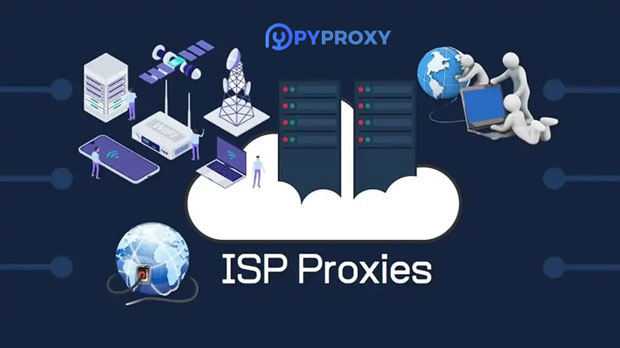How can I increase the speed of my SOCKS5 proxy server to ensure a smooth internet experience?
In today’s digital world, ensuring a fast and seamless internet experience is essential, whether for personal browsing or business applications. socks5 proxy servers are popular due to their ability to route traffic effectively while maintaining high security and privacy. However, like any server, socks5 proxies can experience slowdowns that can affect performance. In this article, we will discuss several methods to improve the speed of a socks5 proxy server. These tips can help users enhance their online experience, whether it’s for secure browsing, accessing geo-restricted content, or ensuring a stable connection for streaming and gaming. 1. Optimize Server LocationOne of the primary factors influencing the speed of a SOCKS5 proxy server is its physical location. The closer the server is to the user, the lower the latency and faster the connection. If the server is located far from the user, the data has to travel longer distances, which results in delays and slower speeds.To improve speed, choose a server location that is geographically closer to your physical location or the target content you wish to access. For instance, if you're connecting from Asia but need to access content located in North America, choose a server that is closest to the North American continent, rather than one located halfway across the globe.2. Choose the Right Proxy Server with Adequate ResourcesNot all SOCKS5 proxies are created equal. Some proxy servers may be overloaded with too many users, which can lead to congestion and slower speeds. It is essential to choose a proxy server that has sufficient bandwidth and resources to handle your traffic efficiently.A high-performance server with robust hardware can significantly reduce bottlenecks. Therefore, when selecting a SOCKS5 proxy server, ensure that the provider offers servers with high bandwidth capacity, minimal user load, and powerful infrastructure.3. Optimize Network Settings and ProtocolsOptimizing your network settings and protocols can also help improve SOCKS5 proxy speed. Consider adjusting your MTU (Maximum Transmission Unit) settings, which can influence packet size and transmission efficiency. A smaller MTU may result in fewer fragmentation issues, leading to faster transmission.Additionally, ensure that the protocol version used by the SOCKS5 proxy server is up to date. Some older versions of the protocol may not support modern optimizations that are available in newer releases, affecting performance. Always use the latest protocol standards to avoid unnecessary delays.4. Enable Compression for Reduced Data UsageAnother way to enhance SOCKS5 proxy server speed is by enabling data compression. Compression reduces the amount of data that needs to be transmitted, which can help improve speed, especially when dealing with large files or media-heavy content. This is particularly useful when accessing websites with rich media or when streaming content.Many modern SOCKS5 proxies offer built-in compression options, but users should ensure that their application or tool supports this feature. By enabling compression, you can reduce latency and enjoy faster browsing and data transfer speeds.5. Avoid High Traffic and Peak HoursThe time of day can significantly impact the speed of your SOCKS5 proxy server. During peak hours, when many users are simultaneously connected to the server, the load on the server increases, leading to slower speeds for everyone. To mitigate this issue, try to use the proxy during off-peak hours when fewer users are likely to be online.If your usage requires a consistent and high-speed connection, consider investing in a private SOCKS5 proxy or one that is dedicated solely to you, which will ensure you aren’t competing with others for bandwidth.6. Use Faster DNS ServersWhile SOCKS5 proxies are used to route internet traffic, DNS servers are responsible for resolving domain names. Slow DNS resolution can introduce additional delays, which can negatively impact your overall internet speed. To ensure a smoother experience, switch to faster and more reliable DNS servers.Popular DNS services, such as Google DNS or Cloudflare DNS, are known for their speed and reliability. By configuring your system to use faster DNS servers, you can reduce the time it takes to resolve domain names, which, in turn, enhances your overall proxy server performance.7. Minimize Encryption OverheadWhile encryption adds a layer of security to your SOCKS5 proxy connection, it also introduces some overhead, which can slow down the connection. If the goal is to maximize speed and the data being transmitted doesn’t require stringent encryption, you may opt for a less secure but faster connection option.However, it’s important to strike a balance between security and speed. For sensitive activities like online banking or secure communications, encryption should be prioritized over speed. But for activities where speed is the primary concern (such as streaming or gaming), reducing encryption overhead can be a viable option to boost performance.8. Use a Wired Connection Instead of Wi-FiThe type of connection you use can also play a significant role in the speed of your SOCKS5 proxy. Wi-Fi connections, while convenient, are often prone to interference and signal loss, leading to slower speeds and more packet loss.Whenever possible, use a wired Ethernet connection instead of Wi-Fi for a more stable and faster connection. Wired connections are less susceptible to external interference and can provide more consistent speeds, especially when using a high-performance proxy server.9. Monitor and Adjust for LatencyNetwork latency, which is the time it takes for data to travel from one point to another, can negatively impact SOCKS5 proxy speed. Latency can be caused by several factors, including network congestion, poor routing, and server overload.To reduce latency, consider using tools to measure the network’s latency and identify potential issues. If latency is high, experiment with different proxy servers or adjust network routes to reduce the number of hops between your device and the server.10. Regularly Update and Maintain Your Proxy ServerRegular maintenance and updates can help improve the speed of a SOCKS5 proxy server. Keep the server software updated to ensure that any performance-related bugs or vulnerabilities are addressed. Additionally, periodic maintenance, such as clearing logs and optimizing database performance, can help the server run efficiently and avoid unnecessary slowdowns.If you are managing your own SOCKS5 proxy server, it’s essential to stay on top of updates and ensure the server is properly optimized for the latest technologies and performance improvements.ConclusionImproving the speed of a SOCKS5 proxy server requires a combination of factors, including server location, hardware performance, network settings, and user habits. By following the tips outlined above—such as choosing the right server, optimizing protocols, enabling compression, and using wired connections—you can significantly enhance the performance of your SOCKS5 proxy. In today’s fast-paced online environment, ensuring a smooth internet experience is essential for both personal and professional use, and with these adjustments, you can ensure that your SOCKS5 proxy server works efficiently to meet your needs.
2025-01-03

























































